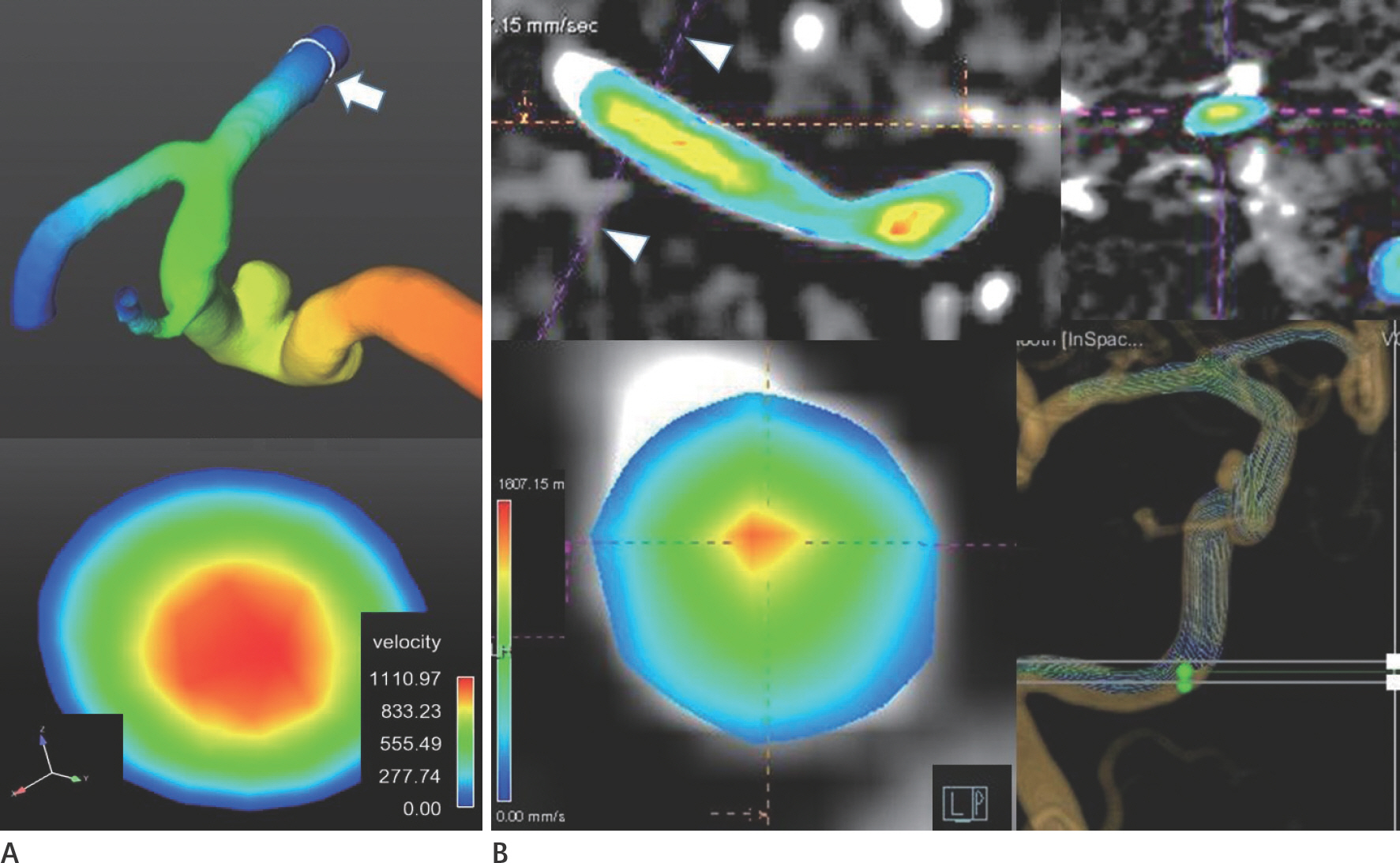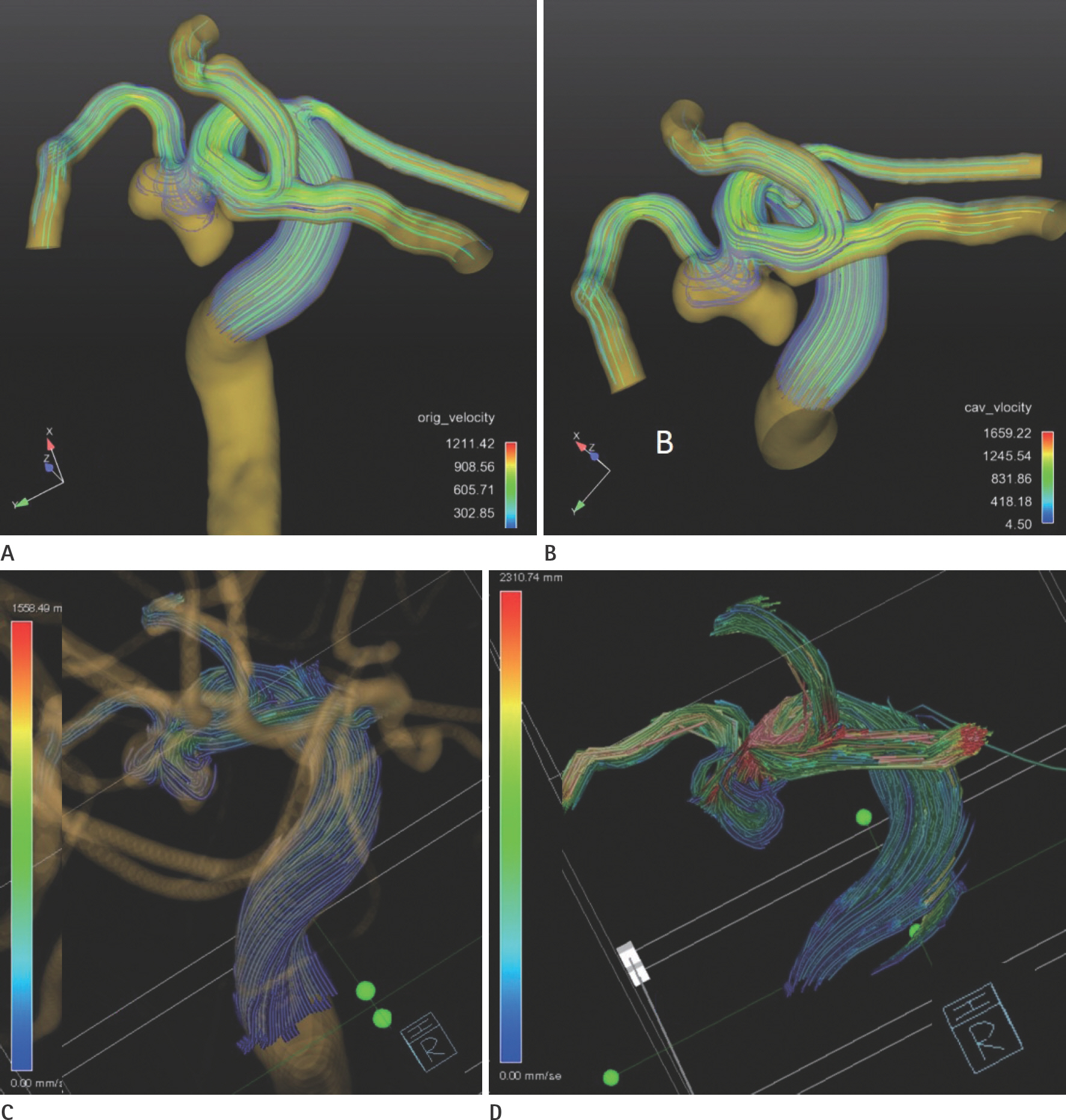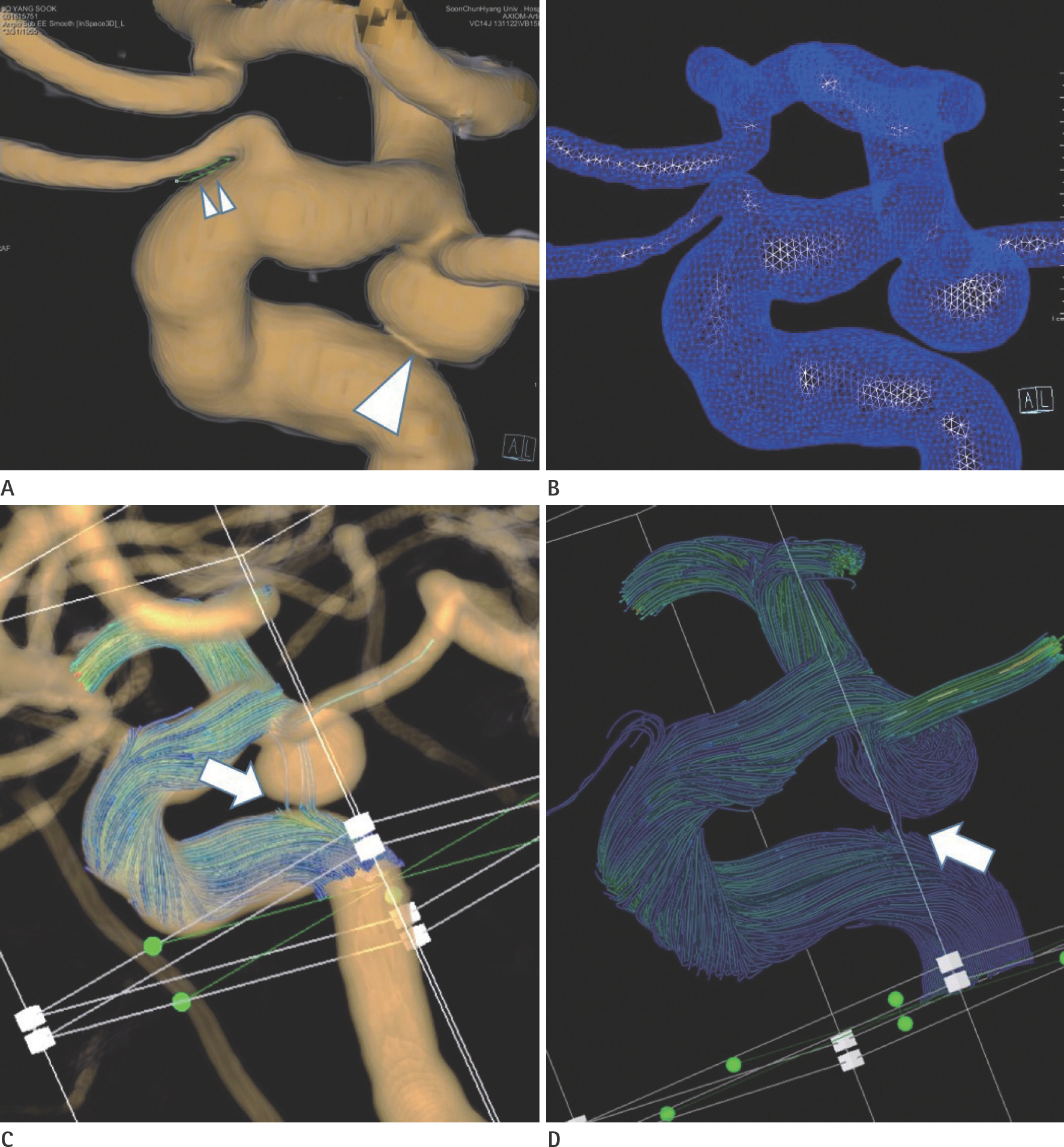J Korean Soc Radiol.
2017 Sep;77(3):133-142. 10.3348/jksr.2017.77.3.133.
Computational Fluid Dynamics: Comparison of Prototype and Commercial Solutions for Intracranial Aneurysms with Different Entrance Length
- Affiliations
-
- 1Department of Radiology, Soonchunhyang University Hospital, Seoul, Korea. stpark@schmc.ac.kr
- 2Molds & Dies Technology R&D Group, Korea Institute of Industrial Technology, Cheonan, Korea.
- KMID: 2405727
- DOI: http://doi.org/10.3348/jksr.2017.77.3.133
Abstract
- PURPOSE
The aim of this study is to evaluate the influence of entrance length into computational fluid dynamics (CFD), for distal internal carotid artery (ICA) aneurysms.
MATERIALS AND METHODS
Two different solutions were used: Siemens prototype software (SW; prototype, not commercially available) and the package of commercial CFD SW (commercials). Twelve models of aneurysm at the distal ICA were obtained from three dimensional angiography. The original models had longer entrance lengths from the cervical segment of ICA, whereas intracranial (IC) model lengths were shorter from the proximal cavernous ICA.
RESULTS
The prototype showed faster flow than the commercial CFD, when comparing the maximum value on a velocity scale. Visualization of pathline within the aneurysm sac was seen well by the prototype, except one original model which showed a pathline leak. With IC models, both tools showed high correlation with the flow velocity.
CONCLUSION
We believe that the CFD might be influenced by different solvers and entrance length of distal ICA aneurysm models.
MeSH Terms
Figure
Reference
-
1.Robertson AM., Watton PN. Computational fluid dynamics in aneurysm research: critical reflections, future directions. AJNR Am J Neuroradiol. 2012. 33:992–995.
Article2.Li MH., Chen SW., Li YD., Chen YC., Cheng YS., Hu DJ, et al. Prevalence of unruptured cerebral aneurysms in Chinese adults aged 35 to 75 years: a cross-sectional study. Ann In-tern Med. 2013. 159:514–521.3.D'Urso PI., Lanzino G., Cloft HJ., Kallmes DF. Flow diversion for intracranial aneurysms: a review. Stroke. 2011. 42:2363–2368.4.Moyle KR., Antiga L., Steinman DA. Inlet conditions for im-age-based CFD models of the carotid bifurcation: is it rea-sonable to assume fully developed flow? J Biomech Eng. 2006. 128:371–379.
Article5.Hoi Y., Wasserman BA., Lakatta EG., Steinman DA. Effect of common carotid artery inlet length on normal carotid bi-furcation hemodynamics. J Biomech Eng. 2010. 132:121008.
Article6.Hodis S., Kargar S., Kallmes DF., Dragomir-Daescu D. Artery length sensitivity in patient-specific cerebral aneurysm simulations. AJNR Am J Neuroradiol. 2015. 36:737–743.
Article7.Cebral JR., Castro MA., Appanaboyina S., Putman CM., Millan D., Frangi AF. Efficient pipeline for image-based patient-specif-ic analysis of cerebral aneurysm hemodynamics: technique and sensitivity. IEEE Trans Med Imaging. 2005. 24:457–467.
Article8.Hodis S., Kallmes DF., Dragomir-Daescu D. Adaptive grid gen-eration in a patient-specific cerebral aneurysm. Phys Rev E Stat Nonlin Soft Matter Phys. 2013. 88:052720.
Article9.Jansen IG., Schneiders JJ., Potters WV., van Ooij P., van den Berg R., van Bavel E, et al. Generalized versus patient-specif-ic inflow boundary conditions in computational fluid dy-namics simulations of cerebral aneurysmal hemodynamics. AJNR Am J Neuroradiol. 2014. 35:1543–1548.
Article
- Full Text Links
- Actions
-
Cited
- CITED
-
- Close
- Share
- Similar articles
-
- Influence of Parent Artery Segmentation and Boundary Conditions on Hemodynamic Characteristics of Intracranial Aneurysms
- The Current Limitations and Advanced Analysis of Hemodynamic Study of Cerebral Aneurysms
- Computational Fluid Dynamics Modeling in Aortic Diseases
- Computational Fluid Dynamics of Intracranial Artery Using 3-Dimensional Angiography: Potentials and Technical Considerations
- Considerations of Blood Properties, Outlet Boundary Conditions and Energy Loss Approaches in Computational Fluid Dynamics Modeling





